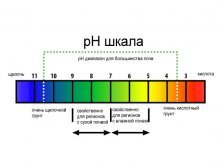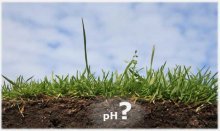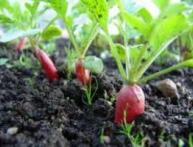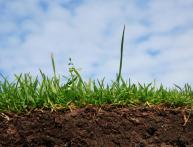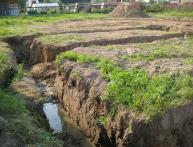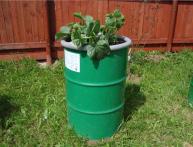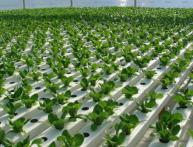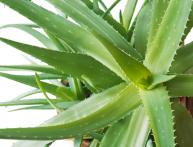Soil acidity: the most common methods of determination
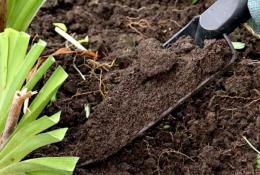
The full growth of many plants and vegetable crops depends on the composition of the soil. Among all parameters acidity level soil is the most important.
Fertility and the amount of harvest depend on this indicator.
Content:
Main types of soil acidity
Acidity is usually understood as the presence of salts, acids and exchangeable ions in the soil. Acidity is measured in two indicators: absolute and potential.
Absolute acidity is measured in pH. This number represents the ratio of calcium ions to hydrogen ions. The number of calcium ions and hydrogen ions in a neutral environment is the same.
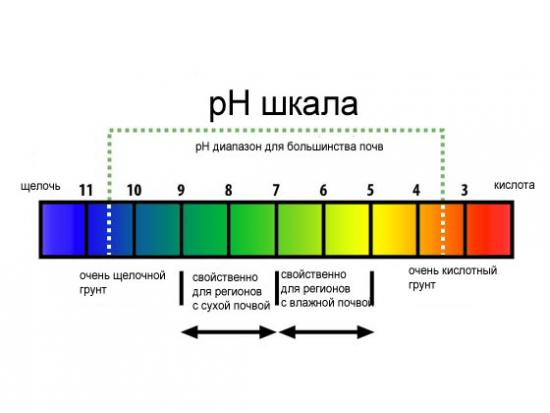
In acidic soils, there are more hydrogen ions than calcium ions. In such an environment, nutrients are poorly absorbed.
When using potassium and mineral fertilizers, their effectiveness decreases. If in soil If there are more calcium ions than hydrogen ions, then the soil contains alkali.
In order for the indicator to approach the neutral level, such soil must be mixed with acidic or neutral soil.
Depending on the pH level, several types of acidity are distinguished:
- Strongly acidic earth – 4.1-4.5 pH
- Moderately acidic soil – 4.6-5 pH
- Slightly acidic soil – 5.1-5.5 pH
- Neutral soil – 5.6-6.9 pH
- Alkaline soil – pH 7 or more
Raspberries and currants grow on moderately acidic soils.Potatoes, tomatoes, and pumpkins grow well in highly acidic soil. Low acidity soil is suitable for growing zucchini, eggplant, and cucumbers.
Peppers, cabbage, beets, garlic, and strawberries can be grown in neutral or slightly acidic soils. Sunflower and sugar beets take root well on slightly alkaline soils.
It is advisable to grow almost all vegetables in slightly acidic or acidic soils. Legumes, in particular beans and beans are mostly grown on neutral soils.
To measure potential acidity, additional ions are introduced into the solution to determine the soil solids and its progression. If the land will be used for a long time, then potential acidity is an important indicator.
The quality of the soil, as well as its suitability for growing individual crops, depends on the level and type of acidity.
Methods for determining acidity
The acidity level must always be monitored. Soil acidity can be determined in one of three ways:
- for weeds and plants
- litmus test
- special device
On highly acidic soils you can see plantain, horsetail, buttercup, and cornflower. Euphorbia and clover grow on moderately acidic soil.

Wheatgrass, white clover, field cornflower, Ivan-da-Marya can be found on slightly acidic soils. In a neutral environment, meadow clover, chicory, and hairy sedge grow. On alkaline soil you can find Siberian elderberry, rough elm, etc.
Another way to determine acidity is using litmus paper. It can be purchased at a special chemical store. You will also need a color indicator with a pH scale.
Dig a hole in the area and take soil from a depth of 20-25 cm for a sample.Pour distilled water into a deep container, add soil and stir well. Leave in this state for 10-15 minutes, and then stir again.
Next, apply litmus paper to the top layer of soil or take the soaked soil in your hands and squeeze the paper. After a few minutes, the litmus paper will turn bright red, yellow, or green.
If litmus turns bright red, this indicates high acidity of the soil. When the paper turns yellow, the soil is slightly acidic.
A greenish color on litmus paper indicates a neutral soil composition. If the litmus paper turns bright green, then the earth is alkaline. The absolute acidity of the soil can be determined using an acid meter.
There are other methods for determining pH levels. Pour a glass of hot water over a few currant leaves and leave for 10 minutes. When the broth has cooled, add a little earth. If the broth turns red, then the soil is acidic.
The presence of a greenish tint indicates slightly acidic soil. If the soil is neutral, the broth will turn blue.
At home, you can use vinegar to determine acidity. To do this, take a handful of earth and add a few drops of vinegar. If small bubbles appear, then the earth is neutral. If there are no bubbles, then priming sour.
If, after conducting an experiment to detect acidity, the soil is acidic, then it must be lowered. For this, chalk or limestone is used. To increase the acidity level, the soil should be fertilized with pine needle humus.
You can also fill the area with a solution of potassium permanganate. You can determine the acidity of the soil in your summer cottage using one of the tips listed above.
Video on how to determine soil acidity using litmus:
Interesting information about the vegetable garden

